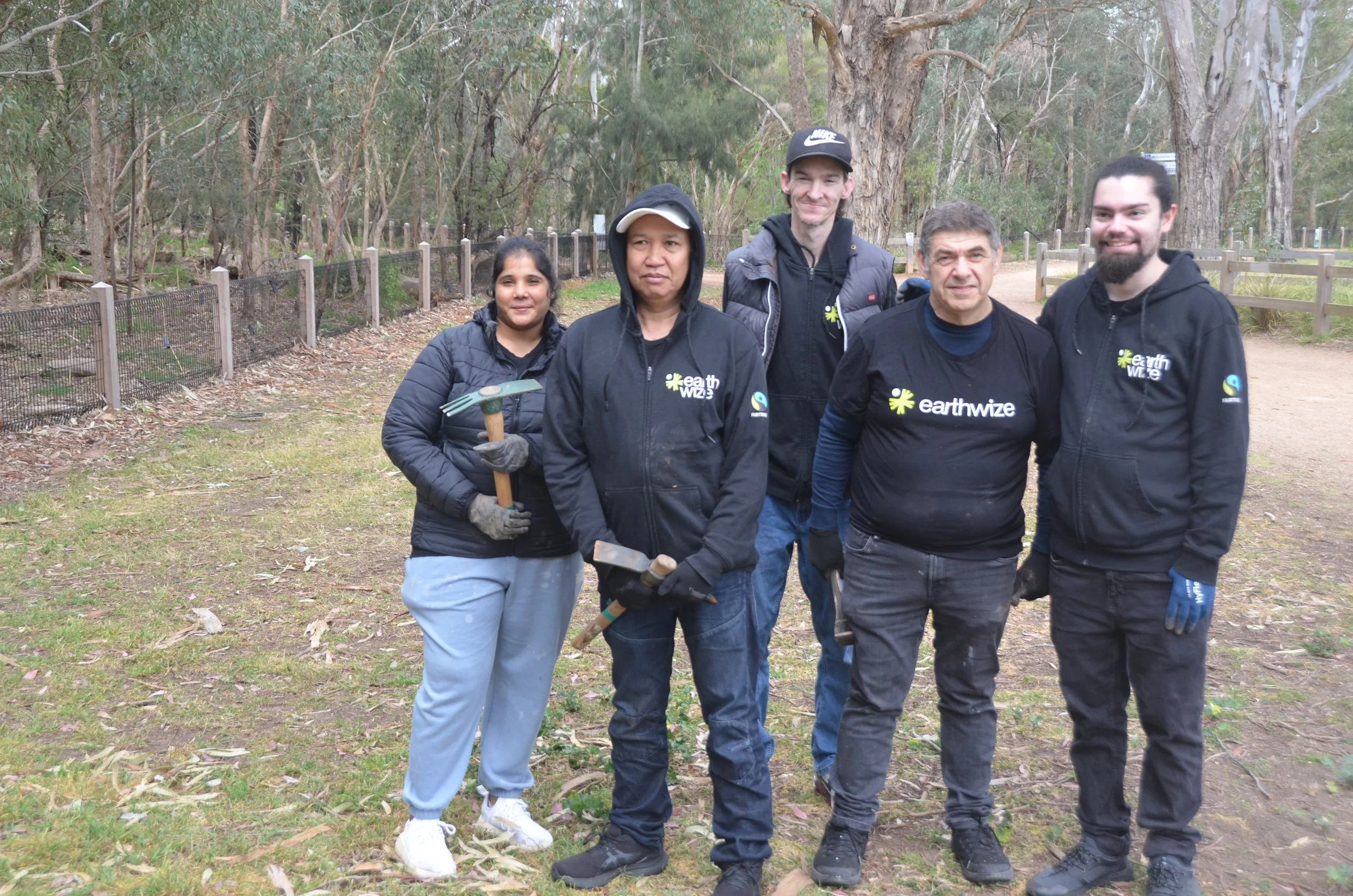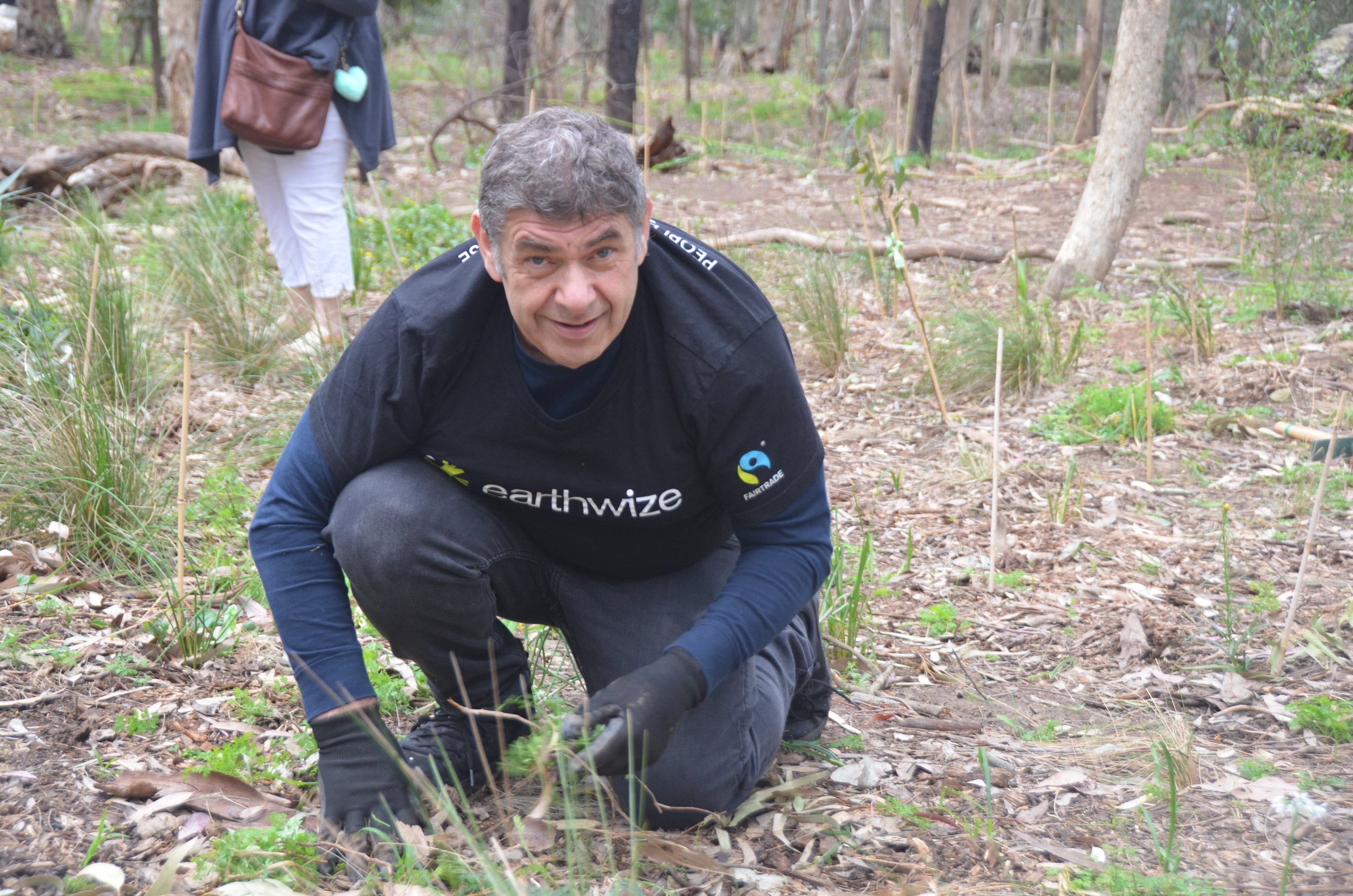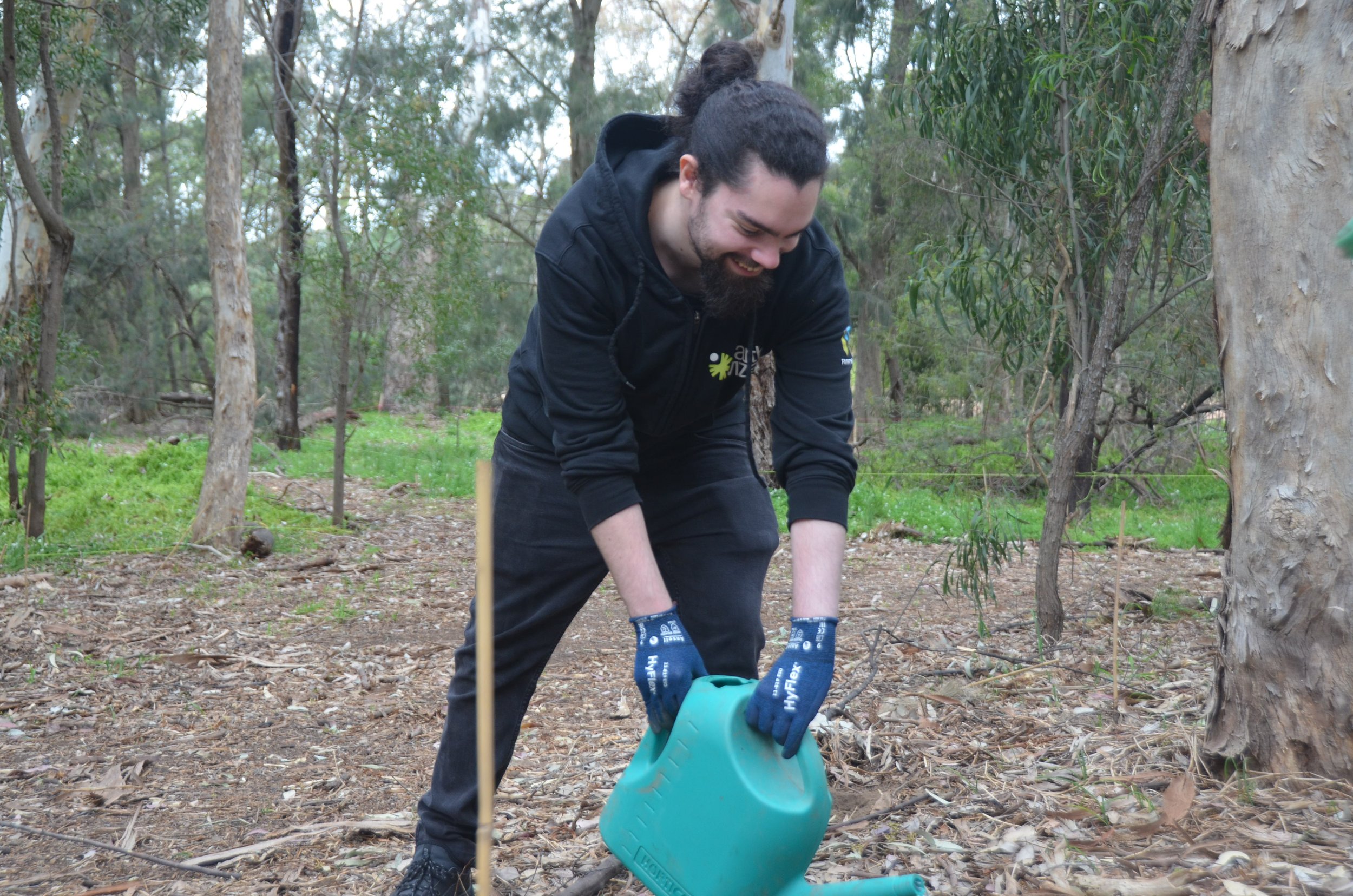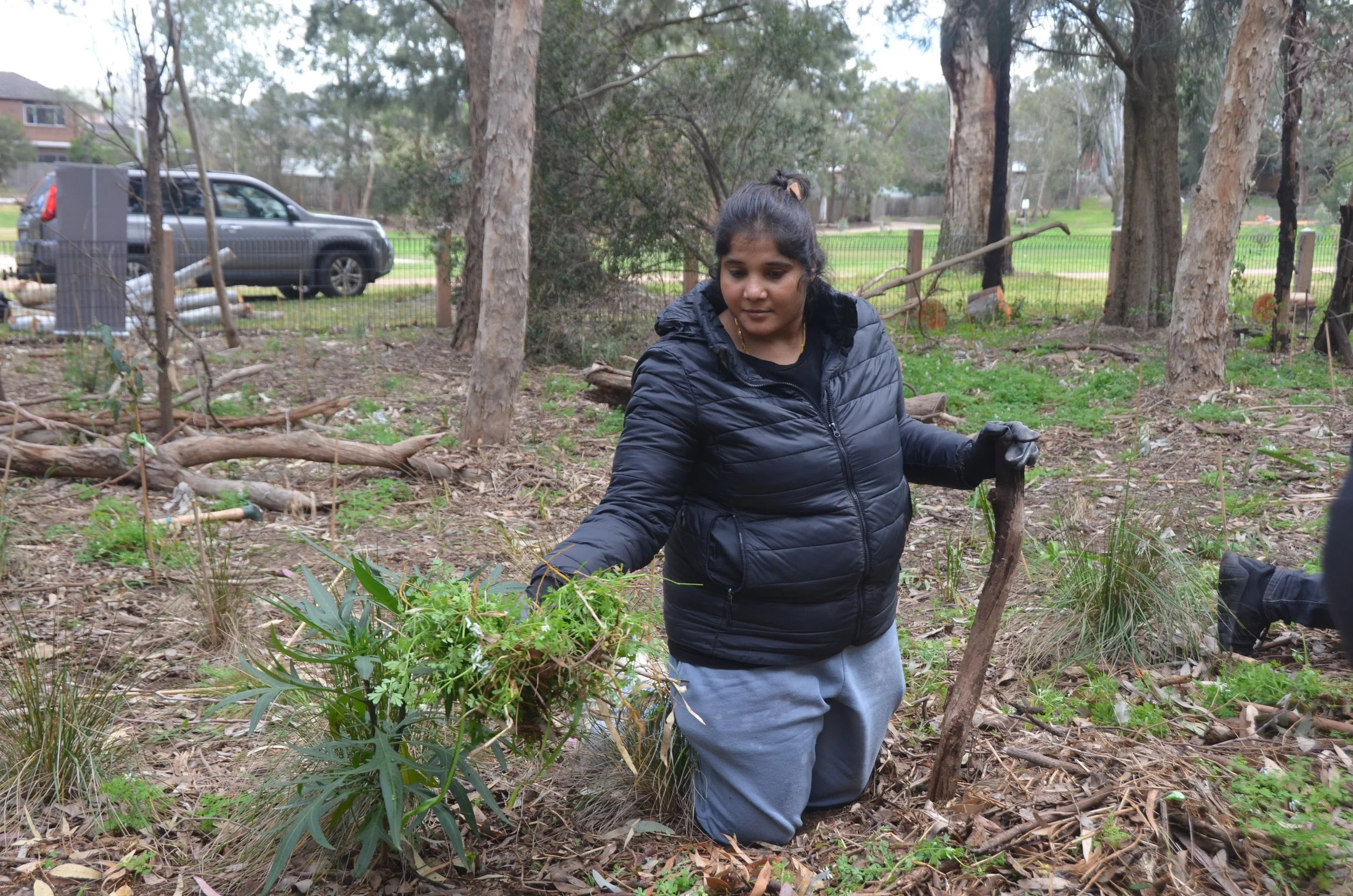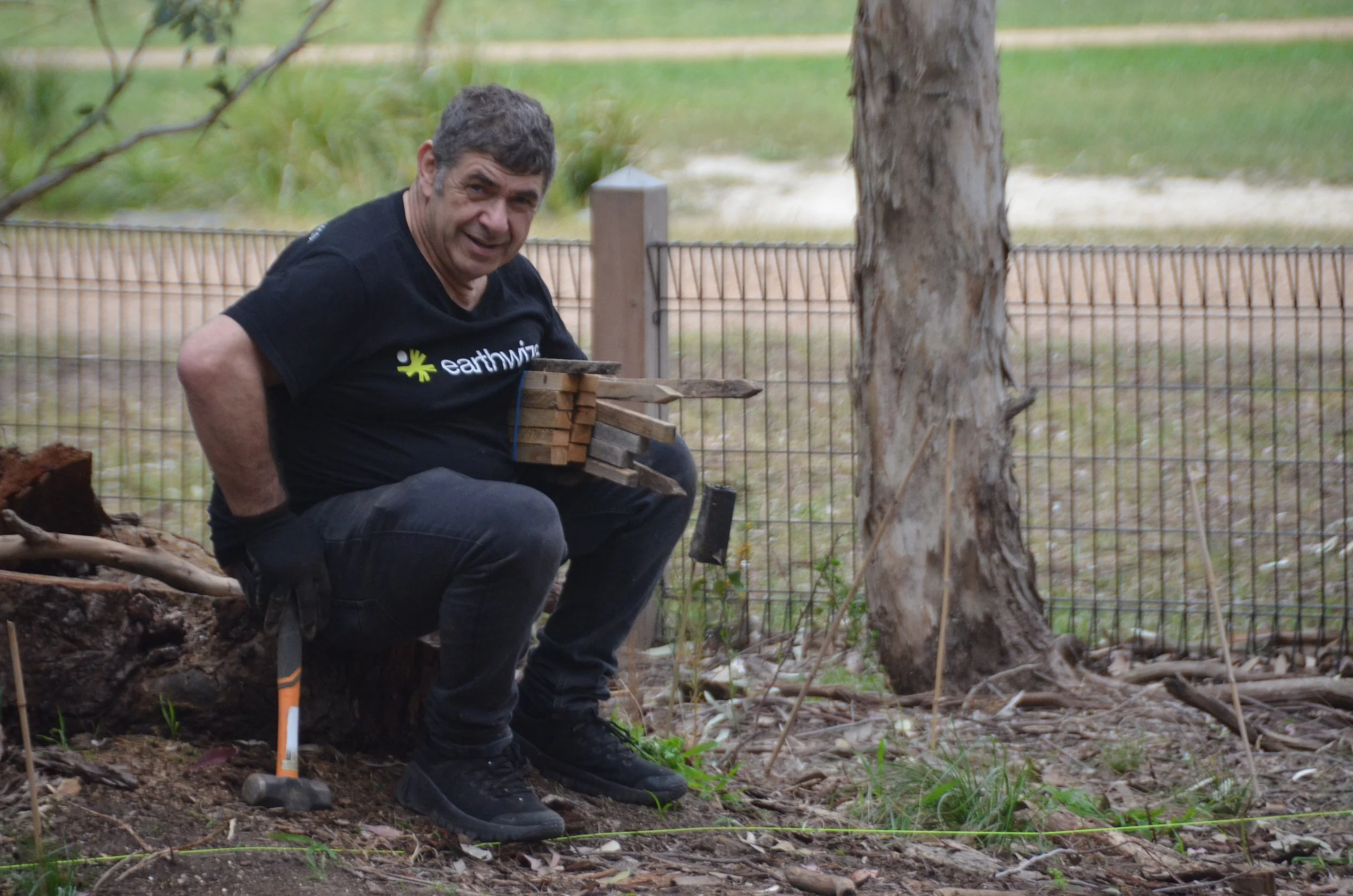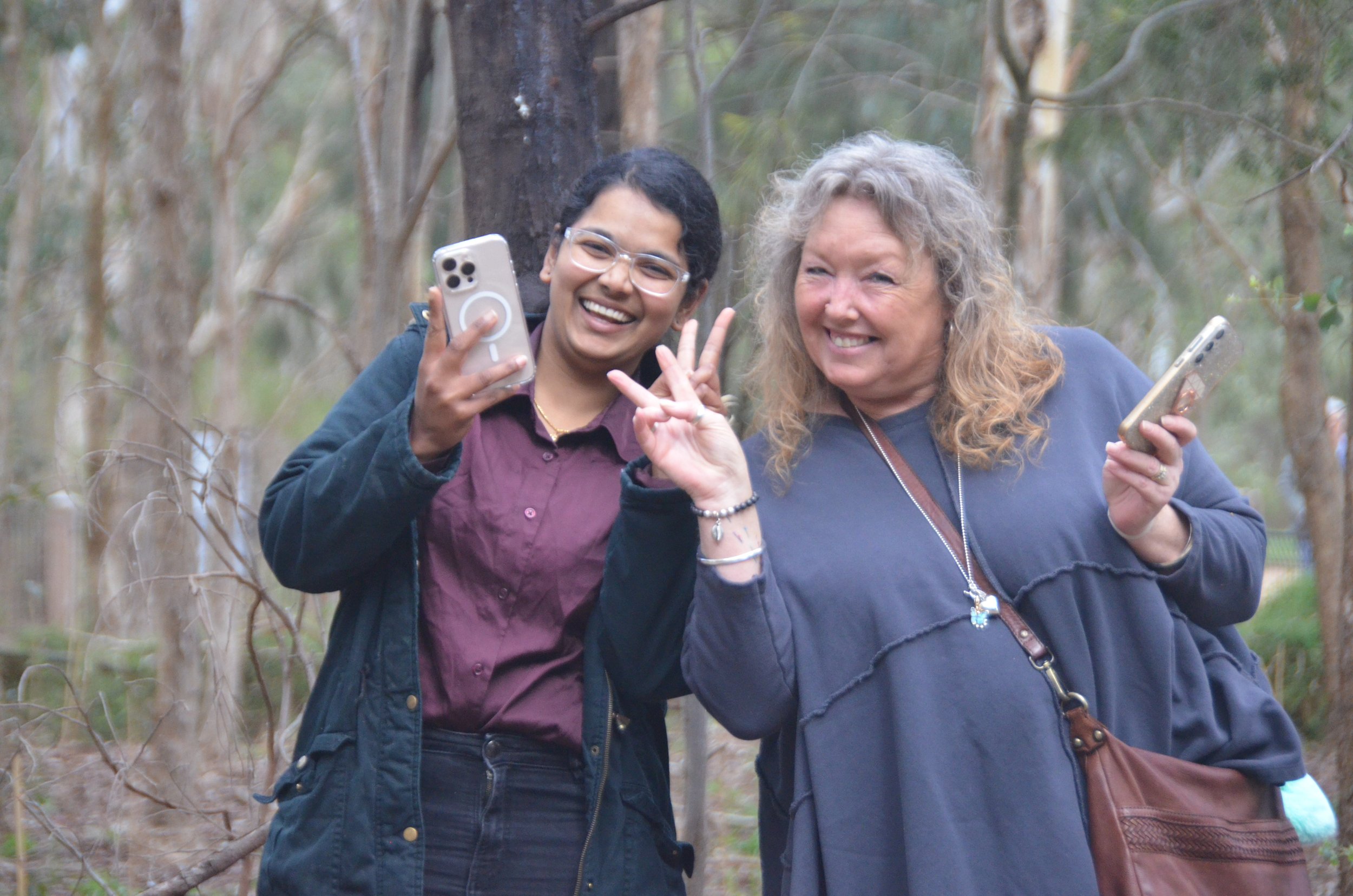Hands in the Dirt at Gardiners Creek: A Morning Well Spent
Look, we just wrapped up four hours at Gardiners Creek Reserve, and here's what we've got to show for it: 400 square metres of weeded bushland, 300 new native plants settling into the soil, and 12 river red gum seedlings—proper matured ones that'll actually stand a chance—going into ground where there was nothing this morning.
It's September 30th, and most of the EarthWize team is heading home with dirt caked under fingernails and boots that'll need a serious clean. Everyone's exhausted in that deeply satisfying way that only comes from work that actually matters.
This is what it looks like when cleaners—people whose work usually goes completely unnoticed—create impact you can measure in hectares and count in hundreds of trees.
Why Gardiners Creek Matters, and Why We Keep Coming Back
The Kooyongkoot corridor (named from the Woiwurrung word for "resting place of the waterbirds") is one of Melbourne's most degraded waterways. Decades of urbanisation pushed out the native flora, displaced the fauna, and left Gardiners Creek a shadow of what it should be.
But here's the thing about restoration work: it's not some abstract environmental concept you put on your website. It's dirt under your fingernails and seedlings in the ground and coming back five months later to see what you planted has tripled in size.
We first volunteered with the Kooyongkoot Alliance back in May, planting about 800 small trees. When we reached out about returning for another session, Graham and the KKA team welcomed us back without hesitation. Because coming back? That's when you really understand what this work means.
The Team That Showed Up
We met at 9:30am at the Bennetswood Bowling Club car park—Sam, Dean, Ben, Jamal, Mahdi, Joe, Alex (and a late appearance from Ian) from EarthWize. But we also had special visitors: Rupa and Marie from Job Find came to see the team in action.
Here's what makes that significant: every single EarthWize cleaner at the reserve today came to us through our Job Find partnership. Ben, Jamal, Mahdi, Joe, Alex, Ian—they all transitioned from welfare into steady employment with us. Now they're not just earning above-award wages and building careers; they're out here restoring Melbourne's bushland on a Tuesday morning.
Rupa and Marie seeing them work with genuine pride and purpose? That's exactly the full circle we're working toward.
Graham met us at the fenced restoration area (the fencing keeps dogs and other predators out—essential for protecting vulnerable native fauna and flora). September's been dry—not ideal planting weather—so today was mostly about weeding. Clearing the invasives. Giving the natives room to establish themselves properly.
But we still managed to get 300 plants in the ground. Including those 12 river red gums.
Four Hours That’ll Echo for Decades
Let's talk about those river red gums for a second, because they're worth the attention. These aren't tiny seedlings that might make it if they're lucky. These are matured seedlings—established enough that when you look at them, you can already picture the massive trees they'll become. River red gums can live 500 years (yep, 500). They'll grow 30 metres tall, provide habitat for dozens of species, stabilise creek banks, and fundamentally change this landscape.
And today, 12 of them went into the ground. Carefully positioned, properly staked, watered in by hands that usually hold mops and vacuum cleaners.
We're already excited to come back in a year and see how they've grown—to watch them transform from seedlings into young trees taking their rightful place in the ecosystem.
Ben and Jamal were absolutely unstoppable. Those two planted the bulk of the 300 trees, moving with the kind of efficiency and purpose you only see when people genuinely care about what they're doing. Joe, joining us at Gardiners Creek for the first time, got stuck in immediately. He clearly enjoyed the physical work of hammering stakes into hard ground to secure the young trees—every stake driven home with satisfaction.
Alex was beaming the whole time (and we mean the whole time). He kept talking about how good it felt to be outdoors, doing something completely different from his daily routine, something meaningful for the environment and community. When we were packing up, he walked over and gave Graham a huge hug. No performance, no prompt—just genuine gratitude for being part of something bigger than himself.
The weeding? Look, we're not going to lie—400 square metres of pulling invasive plants is hard, unglamorous work. Your back hurts, your hands get tired, and there's no dramatic "before and after" photo moment. But it's absolutely essential. Every square metre cleared means native plants can breathe, spread, and reclaim the space that's rightfully theirs.
Seeing What We Did Five Months Ago (And Why It Matters)
Here's what made this morning extraordinary: we could actually see what we'd accomplished back in May.
Those 800 seedlings we planted five months ago? They'd grown two to three times their original size. The whole area looked different—happier, healthier, more alive. You could feel the ecosystem starting to wake up.
Graham pointed out changes we'd never have noticed on our own. The massive influx of insects (which sounds minor until you understand they're absolutely essential for pollination and feeding the entire food chain). The appearance of a sugar glider possum—an arboreal marsupial that won't live somewhere unless there's proper habitat. More birds, including a pair of kookaburras who visited while we were working (what a moment).
KKA's installed bird boxes throughout the area. We're waiting for photos of who moves in.
This is what restoration actually looks like: not a single dramatic transformation, but steady, incremental change. Trees growing. Insects returning. Birds coming back. Ecosystems slowly, stubbornly healing themselves when we give them half a chance.
And it's happening because people showed up with shovels and gloves to do the unglamorous work that no one photographs for Instagram.
Why We Do This (Beyond the Obvious Environmental Bit)
We didn't start EarthWize just to clean offices.
We started it to prove that business can be a force for good. That you can pay above-award wages, employ people directly, operate chemical-free, and spend your Tuesday mornings restoring urban bushland. That cleaners—people whose work is consistently undervalued and often invisible—can create impact that'll be visible for generations.
Those 12 river red gum seedlings will be worth seeing again in a year. In five years, they'll be small trees. In 20 years, they'll be established fixtures of this landscape. In 50 years, they'll be towering over Gardiners Creek, providing shade and habitat and beauty to a community that hasn't even been born yet.
That's what Dean, Ben, Jamal, Mahdi, Joe, Ian and Alex did today. Not bad for people who society often overlooks.
What's Next for Us (And How You Can Get Involved)
This won't be our last time at Gardiners Creek. The Kooyongkoot Alliance has years of restoration work ahead—10,000 plants going in, native understory being re-established, wildlife corridors being reconnected. We're committed to showing up however we can.
If you're interested in getting involved—whether you're an EarthWize client, partner, or just someone who gives a damn about Melbourne's environment—the Kooyongkoot Alliance runs regular working bees. Check them out at kka.org.au. Trust us on this: there's something deeply satisfying about putting plants in the ground and knowing they'll still be there long after you're gone.
This work needs hands. It needs people willing to get muddy. It needs businesses who understand that environmental stewardship isn't a marketing line you put on your website—it's showing up on a Tuesday with shovels and doing the unglamorous work.
For now, we're heading home with dirt under our fingernails, tired muscles, and 12 river red gums that'll still be growing long after we're gone.
Not bad for a morning's work.

